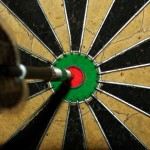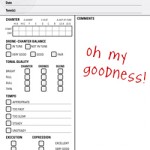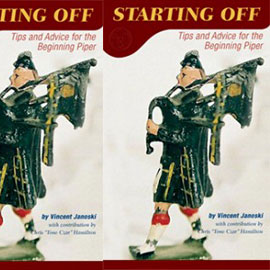Hack Your Practice: Become an Awesome Bagpiper With Your Piping Z-Score
 Setting focussed music goals and working to achieve them is the quickest path to improvement as a bagpiper. But setting proper goals can sometimes be daunting and it can be hard to set the right direction for yourself. In the end, poor goal setting can be counterproductive. But you can stop worrying and perform a quick exercise that will give you the direction you need called the piping Z-score.
Setting focussed music goals and working to achieve them is the quickest path to improvement as a bagpiper. But setting proper goals can sometimes be daunting and it can be hard to set the right direction for yourself. In the end, poor goal setting can be counterproductive. But you can stop worrying and perform a quick exercise that will give you the direction you need called the piping Z-score.
The Z-score can be used in just about any circumstance where skills are brought to bear in a performance of any type. The Z-score is a statistical expression of the divergence of results from the probable mean in a series of trials. It’s used in manufacturing analysis as well as in finance and a whole host of other nerdy applications. You will also find it used more loosely when examining athletic performance. If you think about the term in the context of sports, each attempt at high level performance (a swim time, a jump distance, a batting average, etc.) will fall short of desired goals by a certain amount. Why it falls short could be due to a list of all the skills that make up that performance. It is the distance from 100% on those skills from where you are now that is your Z-score.
In plainer terms, the Z-score would be the distance you are from being awesome right now.
In piping terms, it is the same thing. If you’re following along, the object is to reduce your Z-score and shorten that distance and become 100% perfect on a set of chosen skills.
So lets use the method and walk through finding your own piping Z-score.
Step 1: Take a sheet of graph paper and mark an X in the center. Draw five boxes 10 squares from your X around a circle (or pentagon). The tenth square should touch the box. When you’re finished, you should have something like this:

Step 2: Choose five specific skills or aspects of your bagpiping that you would like to improve on right now. For example, you might choose steady blowing; doubling technique; chanter tuning; tune memorization; tempo and timing. Write these topics in each box.
Step 3: Score yourself on each of these skills on a scale of 1 to 10, with 10 being 100% perfect. Be brutally honest with yourself. Place a dot at the proper square from the X.
Step 4: Connect the dots around the circle or pentagon.
The resulting shape is your piping Z-score and it is a clear map of where you are now in relation to where you want to be. It illustrates where you should focus your practice and your work to be a better bagpiper. Reducing the distance to each of the skills you’ve chosen means targeting the things that will shrink that distance. Any goals you set should be done with getting you toward a “10” on this graph and being awesome.
 Pipehacker
Pipehacker








